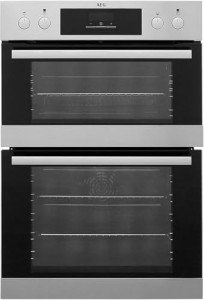The Integrated Oven: A Comprehensive Guide
In modern cooking areas, the pattern toward integrating appliances with kitchen cabinetry to create a seamless appearance has actually gotten substantial traction. Amongst these necessary kitchen tools, the integrated oven stands out as a favored option for many property owners and cooking lovers. This short article explores the advantages, functions, and factors to consider connected with integrated ovens, in addition to answering typically asked concerns.
What is an Integrated Oven?
An integrated oven is a kind of built-in oven that is developed to be flush with kitchen cabinetry. Unlike freestanding designs, which typically stand apart on their own, integrated ovens are hidden or partly hid, providing a sleek and cohesive aesthetic to the kitchen area. Ovens And Hobs can be found in numerous designs, consisting of single, double, and steam ovens, and can be integrated with racks and cabinets for improved storage.
Advantages of Integrated Ovens
Incorporating an oven into your kitchen design can provide numerous advantages. Here are some advantages of choosing an integrated oven:
Space-saving Design:
- Perfect for smaller cooking areas, integrated ovens optimize space usage, leaving more room for other appliances or storage.
Visual Appeal:
- The flush installation creates a structured, modern look that can raise the overall ambiance of a kitchen.
Customizability:
- Integrated ovens can frequently be tailored to match cabinetry or to consist of special features such as pull-out shelves.
Improved Functionality:
- Many integrated ovens come geared up with advanced cooking innovation, such as clever programs and convection heating, enhancing cooking outcomes.
Increased Property Value:
- An integrated oven can enhance the worth of a home, interesting potential purchasers who are interested in contemporary, well-equipped kitchen areas.
Choosing the Right Integrated Oven
When choosing an integrated oven, numerous factors must be considered to make sure that the design fits your cooking requirements and kitchen design. Below are some crucial factors to consider:
Size and Capacity:
- Check the measurements of your kitchen area. Requirement sizes normally range from 60cm to 90cm in width, with capabilities varying based upon the number of meals you typically prepare.
Type of Oven:
- Decide between conventional, convection, and steam ovens. Stove are popular for their even heat distribution, while steam ovens maintain moisture for better-flavored dishes.
Features:
- Look for functions that suit your cooking design. Some functionalities to think about include:
- Self-cleaning options
- Smart technology integration
- Numerous cooking modes
- Safety functions
Energy Efficiency:
- Opt for energy-efficient designs that take in less electrical energy while offering high efficiency.
Spending plan:
- Integrated ovens can be found in various price ranges. Identify your budget while considering the longevity and resilience of the appliance.
| Function | Suggested Model | Description |
|---|---|---|
| Self-Cleaning Function | Yes | Conserves time and effort keeping cleanliness |
| Convection Cooking | Yes | Improves heat distribution for even cooking |
| Smart Technology | Optional | Allows control from mobile phones or voice assistant |
| Multiple Cooking Modes | Yes | Flexibility in cooking different meals |
| Energy Rating | A/A+ | Ensures lower energy consumption |
Installation and Maintenance of Integrated Ovens
Appropriate installation and maintenance are important for ideal oven performance. Here are some actions to think about:
Installation Steps
- Preparation: Ensure you have all the necessary tools and materials before beginning the installation.
- Procedure the Custom Space: Confirm the fit of the oven against the cabinets.
- Connect to Power Supply: Consult an electrical contractor for safe electrical connections.
- Leveling: Ensure the oven is level to prevent cooking inconsistencies.
- Connect Cabinet Panels: If needed, attach decorative panels for a tailored look.
Upkeep Tips
- Regular Cleaning: Frequent cleaning avoids food accumulation and ensures the oven runs effectively.
- Examine for Damage: Inspect the door seals and interior for signs of damage frequently.
- Service Regularly: Schedule expert servicing to keep effectiveness and efficiency levels.
- Follow Operating Instructions: Always comply with manufacturer guidelines for operation and upkeep.
Often Asked Questions (FAQs)
What is the difference in between a built-in oven and an integrated oven?
While both types are developed to suit kitchen cabinetry, built-in ovens can stand out a little, while integrated ovens sit flush with surrounding kitchen cabinetry.
Are integrated ovens more costly than traditional ovens?
Normally, integrated ovens can be more expensive due to the style and functions that accommodate a smooth build into the kitchen.
Can I replace my existing oven with an integrated oven?
Yes, however guarantee to think about the size and any adjustments required for your kitchen cabinetry and kitchen design.
The length of time do integrated ovens typically last?
With appropriate upkeep, integrated ovens can last anywhere from 10 to 15 years or longer.
Do integrated ovens need special installation?
Integrated ovens often need expert setup to guarantee they are fitted properly with proper connections and precaution.
Integrated ovens provide an advanced and effective solution for contemporary kitchen areas, improving aesthetic appeal while supplying innovative cooking capabilities. By carefully assessing features, installation, and upkeep, homeowners can choose an integrated oven that best fits their culinary needs and design preferences. With the numerous styles and types readily available, anyone can attain a practical area that matches their cooking lifestyle, making the integrated oven an outstanding financial investment for any home.

